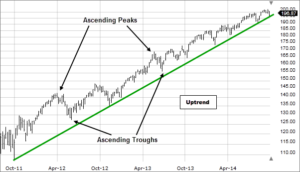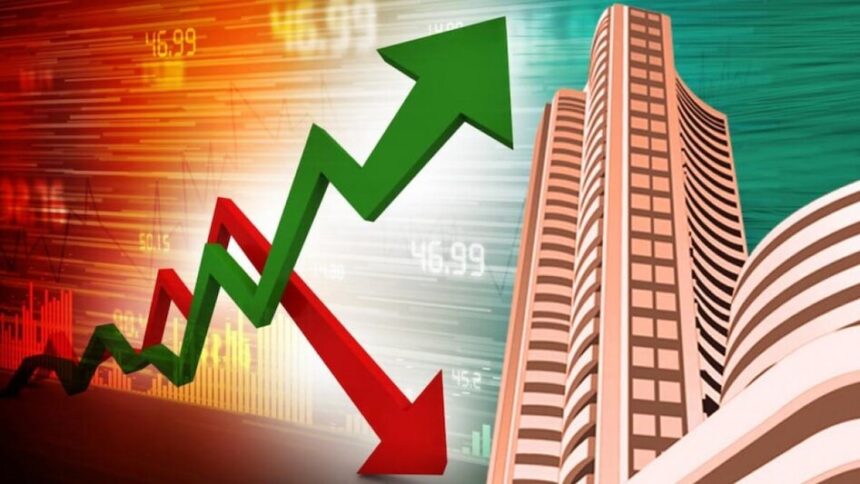Investing in the stock market can be daunting, especially for beginners. With constantly fluctuating numbers and market trends, it can be difficult to understand where to invest your money. However, for those interested in the Indian stock market, one important index to keep an eye on is the Sensex. Today’s Sensex is making headlines with its recent performance, leaving many investors wondering what this means for their portfolios. In this article, we will break down the current state of the Sensex and provide a comprehensive guide for investors who want to understand the market.
A quick overview of the Sensex mechanism
Sensex, short for sensitive index, is a stock market index that reflects the performance of 30 well-established and financially sound companies listed on the Mumbai Stock Exchange (BSE), one of India’s leading stock exchanges.
Is. These companies are selected based on their market capitalization, liquidity, and overall industry representation, making the Sensex a barometer of the health of the Indian economy. The index is calculated using the free-float market capitalization method, which considers only shares available for trading to the public, excluding shares held by promoters. This approach helps provide a more accurate reflection of market movements and investor sentiment.
The value of the Sensex fluctuates throughout the business day as the share prices of its constituent companies fluctuate, providing investors and analysts with a real-time snapshot of market trends. Understanding the Sensex methodology is vital for anyone looking to evaluate the Indian stock market, as it offers insight into the broader economic picture and helps in making informed investment decisions.
Factors Affecting Sensex Today
Several factors are influencing the Sensex today, including global market trends, domestic economic indicators, corporate earnings reports, and geopolitical events. Investor sentiment is significantly influenced by the performance of international markets, particularly stock markets in the US and Europe.
Additionally, changes in India’s economic policies, inflation rates, and interest rates set by the Reserve Bank of India play an important role. Corporate earnings and news about Sensex’s constituent companies also have a direct impact on its movements. Finally, geopolitical tensions or events can cause market volatility, affecting the performance of the Sensex on a given day.
The Impact of Economic Policies on Sensex Movements
The interaction between the government’s economic policies and the movement of the Sensex is complex and significant. When the government announces new economic policies, such as tax reforms, fiscal stimulus packages, or regulatory changes, it can lead to an immediate reaction in the stock market.
For example, policies aimed at promoting economic growth, improving infrastructure, or increasing the ease of doing business can boost investor confidence, leading to a rise in the Sensex. Conversely, policies perceived as restrictive or detrimental to business prospects may result in sell-offs, leading to a decline in the Sensex.
Monetary policies set by the Reserve Bank of India (RBI), including adjustments to interest rates and reserve ratios, also play an important role. A drop in interest rates can make borrowing cheaper, and encourage business expansion and consumer spending, which in turn can lead to a rally in the stock market. On the other hand, interest rate hikes can combat inflation and reduce investment and consumer spending, potentially leading to a recession.
Investors closely monitor these policy announcements and their impact on the economy and the sectors represented in the Sensex. It is this deep observation and subsequent reaction that indicates the profound impact of economic policies on the movements of the Sensex, reflecting the complex relationship between government decisions and stock market behavior.
Understanding Today’s Sensex Through Market Trends

To understand the significance of today’s Sensex movement, it is important to review the prevailing market trends. Currently, the market is being affected by a combination of both local and global events. On the international front, trade negotiations, changes in foreign policies by major economies, and changes in commodity prices are playing an important role.
Domestically, the Sensex is reacting to recent corporate earnings reports, which have been mixed, leading to mixed investor sentiment. Additionally, market trends are being shaped by expectations about the Reserve Bank of India’s future monetary policy decisions, particularly interest rates.
Investor optimism or pessimism can also be gauged by the market’s reaction to these global and local events. For example, positive news regarding economic recovery or a successful vaccine rollout drives the market higher, reflecting the performance of the Sensex.
Conversely, uncertainties such as geopolitical tensions or economic downturns in key economies can trigger market corrections, affecting the Sensex. By analyzing these trends, investors can get a clear picture of market direction.
Understanding these dynamics is critical to making informed decisions, whether you’re looking to invest in individual stocks or looking at broader market investments. These are the trends that illuminate the path of the Sensex, offering a window into the future of market movements.
Key performers in today’s Sensex
Sensex’s movement today has been significantly influenced by the outstanding performance of sectors such as IT, pharmaceuticals, and fast-moving consumer goods (FMCG). Companies in these sectors have shown resilience and growth, which has contributed positively to the overall performance of the Sensex.
In particular, tech giants and leading pharmaceutical companies have seen their stock prices rise due to increased demand for their products and services amid the current global climate. These key players not only indicate sectoral strength but also highlight areas where investors can find potential opportunities for portfolio diversification and growth.
How to use today’s Sensex data for investment decisions
Using today’s Sensex data to make informed investment decisions involves analyzing the movement of the index and understanding the factors driving these changes. Investors should consider the performance of key sectors and companies in the current position of the Sensex. Identifying trends, such as areas showing continued growth or recovery, can help identify where to allocate resources.
Additionally, assessing how global and local events affect the market provides insight into potential volatility or stability. By integrating this analysis with your investment strategy, it is possible to make more calculated decisions, aimed at optimizing returns while effectively managing risk.
The Role of Technical Analysis in Forecasting Sensex Movements
Technical analysis is a method used by investors to predict the future movement of stock prices by examining past market data, primarily price and volume. In the context of the Sensex, technical analysis involves analyzing chart patterns, indicators such as moving averages, and other tools to predict the direction of the index.
This approach can help investors identify trends and make predictions about short-term price movements. While not foolproof, when combined with fundamental analysis, it provides a more nuanced understanding of market dynamics, helping to identify potential entry and exit points for trading the Indian stock market. Help is available.
Long Term vs Short Term Perspective on Sensex Today

When considering investing in the Sensex, it is important to distinguish between a long-term and a short-term perspective. Long-term investors typically look beyond the day-to-day volatility of the Sensex, focusing on the growth potential of the Indian economy and its leading companies over years or decades.
They invest in a diversified portfolio of stocks, aiming to ride out market volatility with the hope that their investments will grow in value over time. On the other hand, short-term investors or traders pay close attention to the daily movements in the Sensex, looking to take advantage of these fluctuations to make quick profits.
This approach requires a deep understanding of market trends, technical analysis, and the ability to quickly act on market signals. Although short-term trading can offer significant returns, it comes with high risk and requires more time and attention to manage effectively.
Ultimately, the choice between long-term and short-term investment strategies depends on individual financial goals, risk tolerance, and the amount of time to devote to investment monitoring.
FAQs
Q: What is Sensex and why is it important?
A: The Sensex is an index that measures the performance of 30 leading, financially sound companies listed on the Bombay Stock Exchange (BSE). It is an important indicator of the overall health of the Indian stock market and economy, offering insight into market trends and investor sentiment.
Q: How often does Sensex change?
A: The Sensex is dynamic, fluctuating throughout the business day as share prices of its constituent companies fluctuate, reflecting real-time market movements.
Q: Can individual investors invest directly in Sensex?
A: Individuals cannot invest directly in the Sensex, but they can invest in mutual funds or Exchange Traded Funds (ETFs) that track the performance of the Sensex, thereby mirroring its movements.
Q: How does one interpret the movement of Sensex?
A: A rising Sensex usually indicates positive investor sentiment and economic growth, while a falling Sensex may suggest market pessimism or economic downturn. However, short-term fluctuations are common and may be affected by various domestic and international events.
Q: What should I do if Sensex falls?
A: Fluctuations in the market are normal. Investors should consider their investment horizon and risk tolerance. Diversification and a focus on long-term financial goals are key strategies for navigating market volatility.
Conclusion
In summary, today’s Sensex gives an important picture of the current state of the Indian economy and stock market. Understanding the various factors that influence its movements, from global events to domestic policies, can equip investors with the insights needed to make informed decisions. Whether you want to invest short-term or take a long-term view, keeping track of the Sensex and its key performers can guide your investment strategies. Remember, an informed investor is in the best position to navigate the intricacies of the stock market and take advantage of potential opportunities.







